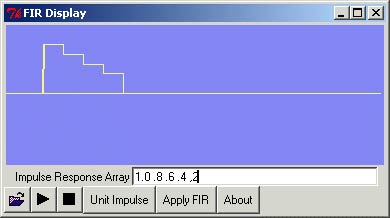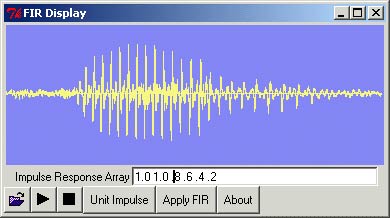FIRDisplay
Introduction
FIRDisplay allows a quick inspection of the result of applying a FIR Filter to a given waveform. FIR stands for finite impulse response. What this means is that the response to a unit impulse is finite in duration. It is a linear filter which means FIR stands for finite impulse response. What this means is that the response to a unit impulse is finite in duration. More precisely, the FIR filter has its response y(t) given by
|
This application was implemented using the FIRFilter class
Below we see an unit impulse input at t=2

Next we see the response with the coefficients 1.0, 0.8. 0.6, 0.4. 0.2, that is b0=1.0, b1=0.8, etc.

Note at t=2, the we first encounter the impulse and our response is b0=1.0. Next, at t=3, the impulse is now one unit back in time and hence b1=0.8 is applied to the unit value to obtain 0.8 at t=3. Etc.
Next, for the fun we have an imput of the word "three"

and applying the above filter we obtain

Note, the noise has been modulateD.